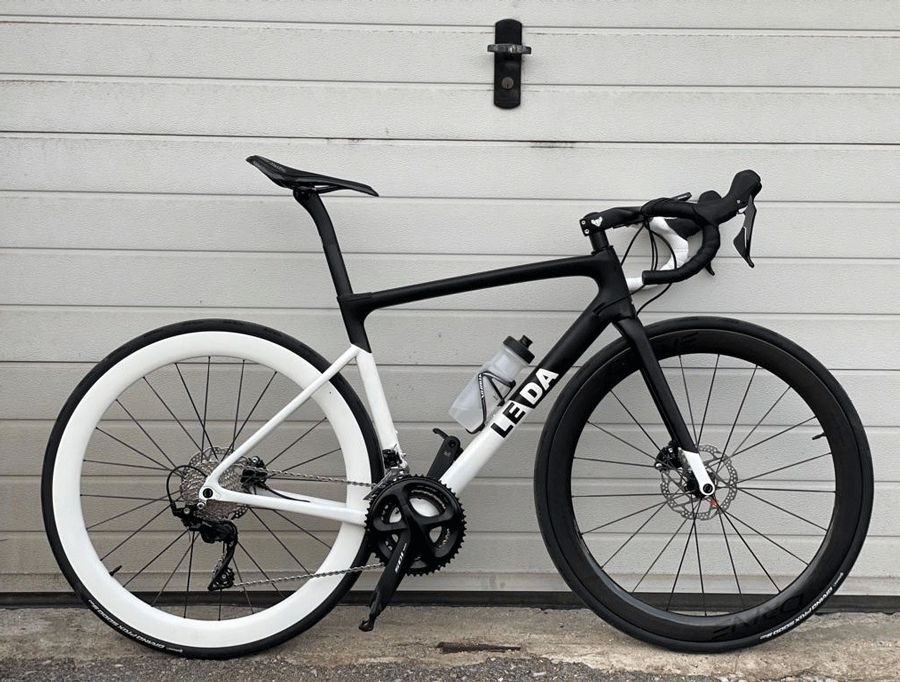
Are you in search of quality mountain bike wheels that provide excellent grip, traction, and speed? Look no further than the 27.5 mountain bike wheels. These wheels offer impressive performance, unbeatable stability, and power to tackle even the toughest terrains. 1. Smoother Rolling There's no denying that 27.5-inch wheels are significantly better in terms of smoothness than 26-inch bikes. Moreover, 27.5 wheels are sturdier than the larger 29-inch options. An added advantage is that these wheels can run lower tire pressures if you prefer to ride with more cushion. Therefore, if you're searching for a stable and comfortable ride that can absorb shocks and improve your experience, 27.5-inch tires make the perfect choice. 2. Improved Control Mountain biking is all about control, and that's precisely what a 27.5-inch tire provides, better grip and control. In comparison to 29ers, 27.5 wheels are easier to navigate and control through tight turns and narrow trails, providing you with superior control, giving you peace of mind as you tackle rugged terrain. 3. Enhance Speed and Acceleration When it comes to speed and acceleration, 27.5 bikes hit the perfect sweet spot. The wheels' weight is neither too heavy compared to 29ers nor too light compared to 26-inch bikes, making the ride smooth and efficient. As a result, you can achieve higher speeds while navigating more technical sections effortlessly and reach a top-speed that was not possible on a 26-inch bike. 4. A Perfect Blend of Efficiency and Comfort Opting for 27.5 wheels gives you the perfect balance of comfort and efficiency while riding. 27.5-inch wheels require less effort to push compared to their 26-inch counterparts, while providing the added benefit of increased stability on the trails. Not to forget that the reduction in rolling resistance offered by the 27.5 tires translates to increased efficiency over longer rides. 5. Suitability for All Levels of Riders The 27.5 wheel format is ideal for every rider out there, ranging from those just starting to intermediate and advanced level riders. The smaller wheel diameter of 27.5 makes them more responsive and easier to maneuver, allowing newer riders to easily control the bike. At the same time, 27.5 wheels provide more performance potential to expert riders looking for speed and precise handling on the most challenging and demanding of terrain. Conclusion: The 27.5 mountain bike wheels are perfect for those looking for an excellent ride that provides the best of both worlds-performance and comfort. The 27.5 tires offer the benefits of both their larger and smaller counterparts, making them suitable for all levels of riders. With this wheel format, you are sure to achieve an unmatched performance, speed, and control on every ride.
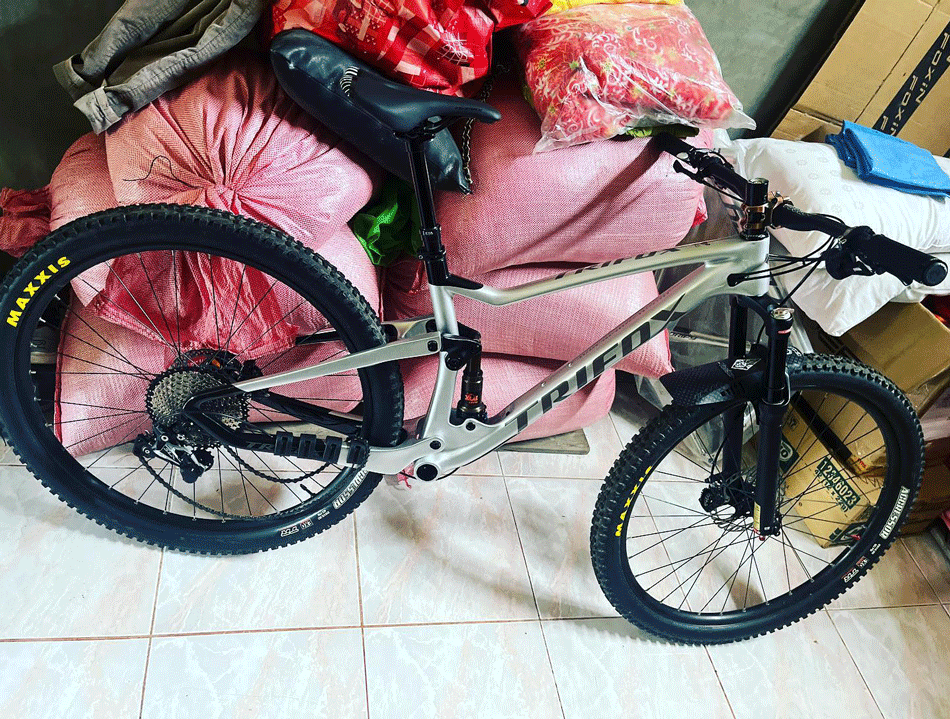
Mountain biking has become an increasingly popular activity for those who love adventure and the great outdoors. A bike is an essential component for this sport; it must be of good quality and should also fit well. 1. Lightweight and Durable: Carbon frames are a popular choice for mountain bike frames due to their weight advantage and ability to withstand the physical challenges of mountain biking. This 29er Carbon Hardtail MTB Frame is no exception, thanks to its lightweight design and the use of high-quality carbon fiber, which makes it sturdy and durable. 2. Ideal Size for Small Riders: A vital component of any bike frame is fit. The SDY20 Carbon Hardtail MTB Frame is an excellent choice for small frame mountain bikes as it has a very efficient design and snug fit. The bike’s design, combined with its lightweight construction, makes it suitable for riders of any age or skill level. 3. Improved Control: Small frame bikes are generally easier to control and maneuver than larger ones. The SDY20 Carbon Hardtail MTB Frame adds to this feature, delivering increased control and grip when riding off-road. Its compact design also makes the bike easier to keep balanced during fast and challenging descents. 4. Increased Speed: Lightweight carbon fiber construction allows for faster speeds, better acceleration, and less effort when peddling. These are not only essential in competitions, but also during leisure riding. The SDY20 Carbon Hardtail MTB Frame supports small riders who want to enjoy a fast and efficient bike that's perfect for their size. 5. Versatile: The SDY20 Carbon Hardtail MTB Frame is an excellent choice for both beginners and experienced riders. It comes with an adjustable seat post and accommodates various types of wheels to meet different riding styles and needs. The frame is easy to assemble and disassemble, making it easy to transport and store. Conclusion: Finding the perfect fit for a small frame mountain bike is essential to fully enjoy your ride. The SDY20 Ultra Light 29er Carbon Hardtail MTB Frame is an excellent choice for small riders, thanks to its durability, lightweight design, improved control, speed, and versatility. It’s the ideal frame for anyone who wants to enjoy a fast, efficient, and exhilarating ride in the great outdoors. Invest in the SDY20 frame and experience the thrill of mountain biking like never before.
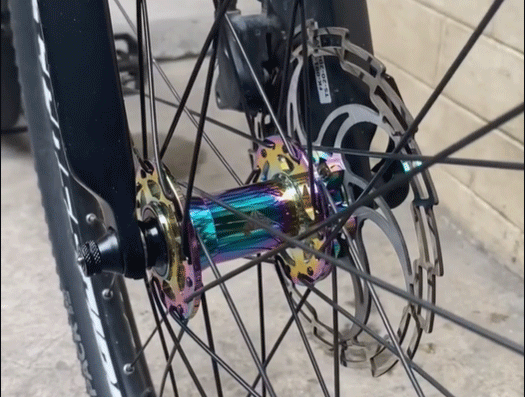
When it comes to mountain biking, choosing the right hub is critical to the performance of your bike. The hub flange spacing is something that might be overlooked, but it's an essential factor when selecting the right hub for your mountain bike. To begin, what is hub flange spacing? The hub flange spacing refers to the distance between the two flanges on a hub. The distance between the flanges affects the tension of the spokes and the lateral stiffness of the wheel. The wider the hub flange spacing, the more the spoke tension will be reduced, making the wheel less stiff. In contrast, if the hub flange spacing is narrower, the spoke tension will be higher, making the wheel stiffer. Hub flange spacing affects wheel strength, and the right spacing will ensure the longevity and durability of your wheels. The Trifox Bike Hub M827 for MTB offers an ideal hub flange spacing. It features a 110mm front hub flange spacing and a 148mm rear hub flange spacing. The wider hub flange spacing provides greater lateral stiffness of the wheel, resulting in better control and stability during your mountain biking activities. This ensures that your bike can handle demanding terrain, steep inclines, and challenging conditions. The Trifox Bike Hub M827 With a lightweight design and durability, this hub is perfect for mountain biking. The alloy construction ensures that the hub can handle the impact of rough terrain, providing a secure and stable foundation for your wheelset. You can rest assured that the hub will be able to handle the demands of your mountain biking adventures. Another essential factor when selecting the right hub for your MTB is the hub's engagement system. The Trifox Bike Hub M827 features a high-engagement system with 72 points of engagement, providing a rapid and responsive engagement experience. This means you can take on steep climbs with ease, as the hub connects directly to the drivetrain, ensuring maximum power and control. In summary, the hub flange spacing is an important consideration when selecting the right hub for your mountain biking activities. The Trifox Bike Hub M827 for MTB offers an ideal hub flange spacing, high-engagement system, durability, and lightweight design. These features ensure that you have the best experience and performance during your mountain biking adventures. Choose the Trifox Bike Hub M827 for MTB if you're looking for a robust, high-performing, and reliable mountain
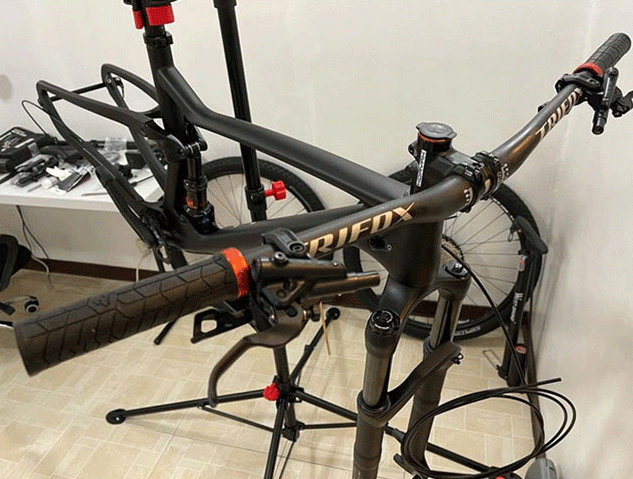
Mountain biking is an adventure sport that is cherished by many adrenaline seekers around the world. It demands strength, endurance, and technique while exploring new trails and terrains. And having the right equipment is essential for a safe and enjoyable ride. The Trifox 31.8 mm Carbon Riser Handlebar RHB300 is a game-changer in the world of mountain biking. 1. Light and Strong: The most notable feature of the Trifox 31.8mm Carbon Riser Handlebar RHB300 is its lightweight and strength. Made with T800 carbon fiber, it weighs only 230 grams, making it one of the lightest handlebars available in the market. But don't let the weight fool you; it can handle the toughest of terrains. it can absorb high impacts and reduce hand fatigue, providing a comfortable ride. 2. Incredible Stability: The handlebar's unique design and the use of high-quality material provide excellent stability on the trail. It has a 9-degree backsweep, a 6-degree upsweep, and a 31.8mm clamp diameter that helps maintain an ergonomic riding position. The handlebar's center bulge enhances stiffness and precise control on technical rides, while the 780mm width enables riders to maximize leverage and control in challenging terrain. 3. Stylish and Versatile: Trifox 31.8mm Carbon Riser Handlebar RHB300 is sleek, stylish, and versatile. It has a matte finish with smooth contours that add an aesthetic appeal to your bike. The handlebar comes in two colors, black and green, making it easy to match with your bike frame. Its compatibility with most mountain bikes, thanks to the standard 31.8mm diameter clamp, makes it accessible to all riders. 4. Easy Installation: The Trifox 31.8 mm Carbon Riser Handlebar RHB300 is easy to install. It comes with comprehensive instructions that guide you through the installation process. Additionally, it has markings on the handlebar that make customization and positioning easy. And with its lightweight, you will experience a noticeable improvement in the handling of your bike. 5. Affordable and Durable: Despite its exceptional features and quality, the Trifox 31.8mm Carbon Riser Handlebar RHB300 is very affordable. It is a great investment that will enhance your mountain biking experience without breaking the bank. And with its durability and resistance to harsh weather conditions, you will enjoy long-lasting use. Conclusion: In conclusion, the Trifox 31.8 mm Carbon Riser Handlebar RHB300 is a game-changer that every mountain biker needs to consider. Its lightweight, strength, stability, style, versatility, and affordability make it an excellent investment for a comfortable, enjoyable, and safe ride. So if you want to take your mountain biking experience to the next level, don't hesitate to try this fantastic handlebar, and you won't regret it.

Mountain biking is a thrilling and adrenaline-pumping sport that offers enthusiasts an opportunity to explore amazing terrain and conquer new heights. Mountain bikers need reliable and sturdy bikes to tackle different terrains, and that's why most bikers swear by the Trifox framed mountain bikes. Trifox bikes are built to last, with premium components and innovative designs that cater to the needs of bikers at all levels. Adventuring on mountain bikes requires durability, strength, and flexibility, and Trifox bikes are an epitome of just that. These bikes are built with premium components that can withstand wear and tear from demanding terrains. For instance, they have a lightweight yet sturdy frame made of high-grade aluminum alloy, which makes it easier to navigate different mountain trails. The frame’s construction ensures there is little to no flex that could lead to a loss of control, especially when you're maneuvering tight corners. Additionally, Trifox framed mountain bikes often come equipped with high-quality gears that can handle the toughest conditions and deliver smooth shifting. The bike’s design ensures that the gears are well aligned and optimized for maximum performance, with precise and effortless shifting. This feature is especially important for bikers who love challenging themselves on steep inclines. The gears should be reliable, smooth, and responsive to guarantee ultimate control and speed. Another reason why Trifox framed mountain bikes are appreciated by bikers is their unique suspension systems that are designed to handle diverse terrains, from rocky paths to steep, muddy slopes. The suspension system should feel plush and provide feedback to the rider about the terrain without feeling too soft or too harsh. Trifox bikes have a full-suspension system that delivers an exceptional riding experience, reducing fatigues, and increasing control over the bike. This feature ensures that you can comfortably ride for extended periods without fear of injury or discomfort. Furthermore, Trifox framed mountain bikes have larger wheel sizes that increase the bike's stability and control. With larger wheels, you can easily roll through rough sections and maintain your speed, even on rocky terrains. They are also known for their great traction on soft surfaces, which comes in handy when negotiating slippery muddy slopes. This feature guarantees a smooth and comfortable ride on virtually any surface. Conclusion: Trifox framed mountain bikes are the perfect companion for any adventurous biker. They're durable, lightweight, designed with premium components, optimized for top performance, and built to withstand the toughest terrains. They come loaded with remarkable features that make the whole biking experience full of fun and excitement without fretting about the bike's reliability. So, if you're looking for a bike that will make your mountain biking adventures unforgettable, investing in a Trifox framed mountain bike is the way to go!
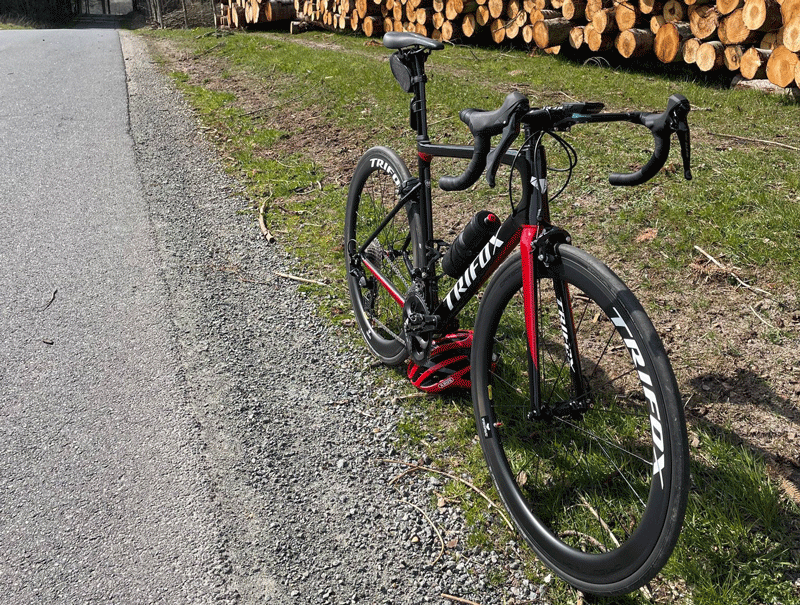
Cycling is more than just a hobby for many people. It is a way of life, a passion, a sport, an adventure, and a challenge. Whether you ride a mountain bike, a road bike, or a hybrid bike, one of the most critical parts of your ride is the wheelset. The wheelset determines your speed, stability, comfort, handling, and overall performance. That is why you should consider upgrading your stock wheels with a Trifox carbon wheelset 700c. 1. Why Trifox Carbon Wheelset 700c is a Game-Changer: Trifox is a renowned brand that has earned a reputation for producing top-of-the-line bike components, including carbon wheelsets. The Trifox carbon wheelset 700c is a game-changer for several reasons. Firstly, it is incredibly lightweight, thanks to its carbon fiber construction, which makes it faster and more agile than traditional alloy wheels. Secondly, it is more robust and more durable than conventional wheels, making it suitable for high-intensity cycling, racing, or off-road adventures. Thirdly, it offers superior aerodynamics, reducing wind resistance and drag, resulting in higher speeds and smoother rides. Finally, it looks sleek and stylish, adding to the aesthetic appeal of your bike. 2. Features of Trifox Carbon Wheelset 700c: The Trifox carbon wheelset 700c boasts several advanced features that make it stand out from the competition. Firstly, it comes in various rim depths and widths, allowing you to choose the perfect size for your riding style and terrain. Secondly, it uses advanced brake track technology that enhances rim stiffness and braking performance, ensuring you stop smoothly and quickly, even in wet or muddy conditions. Thirdly, it has a tubeless-ready design that enables you to run lower tire pressure, reducing flatting and enhancing grip and comfort. Fourthly, it features straight-pull spokes and hubs that distribute tension and stress evenly, improving the wheel's strength and integrity. Finally, it comes with a 2-year warranty, guaranteeing quality and peace of mind. 3. How to Install Trifox Carbon Wheelset 700c: Installing Trifox carbon wheelset 700c on your bike is relatively easy, provided you have the right tools and knowledge. Firstly, you need to remove the existing wheels from your bike by releasing the quick-release or unscrewing the bolts. Secondly, you need to attach the Trifox carbon wheelset to your bike, aligning the cassette, chain, and brake pads. Thirdly, you need to tighten the bolts or close the quick-release securely. Finally, you need to adjust the brakes, the gears, and the tire pressure to ensure optimal performance and safety. Conclusion: The Trifox carbon wheelset 700c is an investment that can transform your cycling experience significantly. It is lightweight, durable, aerodynamic, and stylish, offering superior performance and aesthetics. It has advanced features like brake track technology, tubeless-ready design, straight-pull spokes, and hubs, offering unmatched reliability and strength. It has impressive specifications like weight, tire pressure, rider weight, and decal option, ensuring compatibility and customization. It is relatively easy to install, ensuring that you can upgrade your bike's wheels quickly and hassle-free. So why not unleash the power of Trifox carbon wheelset 700c and take your cycling to the next level?

For any cyclist, staying hydrated during long and bumpy rides is essential. Having a trusty bottle of water within reach is not only essential but could mean the difference between finishing strong and having to call it quits before the finish line. And when it comes to mountain biking, the need for a secure and reliable water bottle cage is paramount. The Trifox Carbon Bike Water Bottle Holder CBC100 is an excellent option for mountain biking enthusiasts. This cage is made of high-quality carbon fiber material, which is both lightweight and durable, giving your bottle unmatched support. Its unique and aesthetically pleasing design fits snugly on your bike with no risk of slipping out. The CBC100 has two arms that secure your bottle in place firmly. Whether you’re cycling uphill or downhill, the cage is able to hold your bottle securely, ready for quick access whenever you need it. Another excellent option is the Trifox Carbon Bike Water Bottle Holder CBC200. Its sleek design and lightweight construction make it the perfect fit for mountain biking enthusiasts who place a premium on style and performance. This cage is made with top-quality carbon fiber material. It is also incredibly versatile, with adjustable arms designed to fit bottles of different sizes with ease. The CBC200 can be used with ease on mountain, road or gravel bikes, meaning it is an investment you can make for all your cycling needs. When it comes to mounting the cages, Trifox makes this as effortless as possible. Mounting the cage is easy and quick, and the compact design helps to keep your bicycle looking neat and uncluttered. You don't have to worry about the cage overheating, as the carbon fiber material can withstand extreme temperatures, which is particularly important when mountain biking in hot and humid weather. The Trifox Carbon Bike Water Bottle Holder CBC100 and CBC200 are must-have accessories if you're a passionate rider who is serious about staying hydrated when mountain biking. Their excellent designs provide secure and quick access to your bottle of water, ensuring that you can maintain your momentum during uninterrupted rides on bumpier terrain. Conclusion: When choosing the best water bottle cage for mountain bike, the Trifox Carbon Bike Water Bottle Holder CBC100 and CBC200 stand out as top options. These cages offer durability from their carbon fiber material and a secure grip on your water bottles to ensure they never come loose during your ride. Overall, they are both excellent investments for cyclists who want high-quality products that can withstand harsh terrain.

Cycling has become a popular pastime for many individuals worldwide. Whether you are a casual or serious cyclist, the type of wheelset on your bike is essential in determining your ride quality and experience. Among the most commonly used wheelset is the 700c rim brake, a versatile option that offers great functionality. 1. Features of 700c Rim Brake Wheelset: 700c rim brake wheelset comprises three main components: the rim, spokes, and hub. The rim is typically 700c in diameter and 13-32 millimeters wide, made from lightweight materials like aluminum or carbon fiber. It features flat rims that work in conjunction with rim brake pads securely. The spoke, on the other hand, runs from the rim to the hub, providing support to the wheel. Lastly, the hub houses the bearings and is available in various materials, including alloy, steel, and carbon fiber. 2. Benefits of 700c Rim Brake Wheelset: The 700c rim brake wheelset is a popular choice due to the benefits it offers. The most significant advantage is their lightweight build, which provides the cyclist with a faster ride. Additionally, they offer excellent braking power since the brake pad is in constant contact with the rim, reducing stopping distance. They are also durable, and their size enables them to cover a more substantial distance easily. Finally, they are affordable and readily available in bike shops across the globe. 3. How to Maintain 700c Rim Brake Wheelset: Maintaining a 700c rim brake wheelset is crucial in keeping its longevity and reducing the frequency for replacement. Firstly, regularly clean your wheelset to remove any dirt or debris that may accumulate. Secondly, check the brake pads for wear and tear regularly, replacing them when you notice that they need changing. Thirdly, truing the wheels is necessary to ensure that they remain straight and provide optimum performance. Finally, adequately lubricate the bearings and hubs to improve smoothness and counter rusting. 4. Alternatives to 700c Rim Brake Wheelset: If you're looking to branch out from the 700c rim brake wheelset, there are several alternatives to choose from. The 650b and 26-inch wheelset are popular alternatives that offer more tire clearance and improve adaptability to various terrain. The disc brake wheelset is also an excellent alternative, providing greater stopping power and better performance in wet conditions. All these alternatives offer varying benefits, and it's crucial to choose one that meets your cycling requirements. Conclusion: In conclusion, the 700c rim brake wheelset is an excellent choice for both casual and serious cyclists due to its numerous benefits, including being lightweight and affordable. However, it has downsides such as limited tire clearance and difficulty in wet conditions. Maintaining and checking the wheelset is crucial in prolonging its life span. While the 700c rim brake wheelset is an excellent choice, it's helpful to learn about alternative options such as the 650b, 26-inch wheelset, and disc brake wheelset, to make an informed choice that meets your needs.
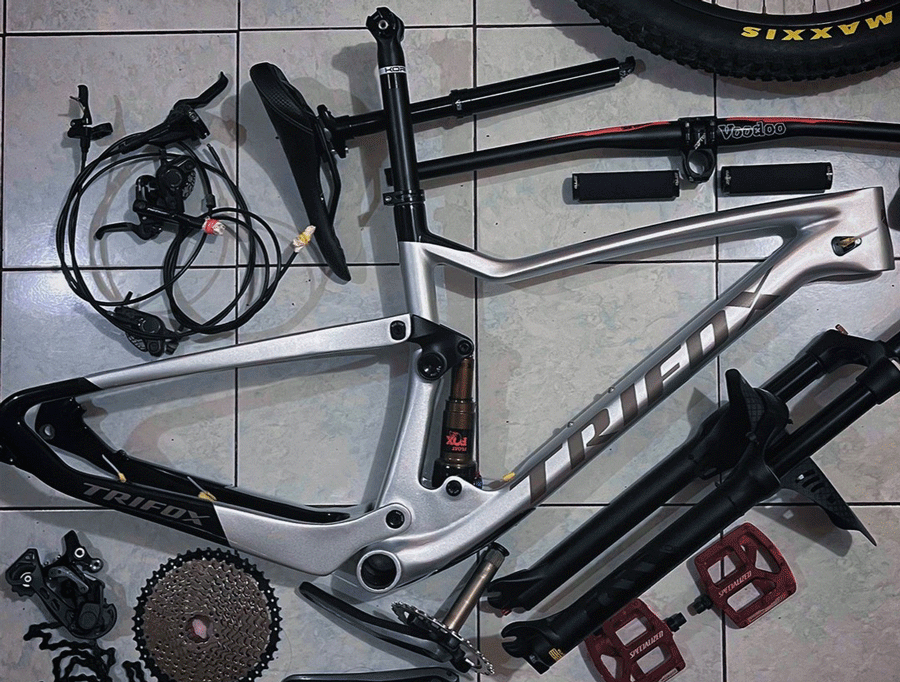
Mountain biking is an exciting and challenging sport, but it can also be an expensive one. If you’re building a bike from scratch or upgrading your current setup, the cost of a high-quality mountain bike frame can quickly add up. Luckily, there are numerous ways to find the best mountain bike frames for sale cheap. The first step in finding an affordable mountain bike frame is to seek out sales and promotions. Many online retailers offer seasonal discounts or limited-time offers on last year's models, so keep an eye out for these sales. Furthermore, retailers often offer discount codes that can reduce the price even further. Another excellent way to find affordable mountain bike frames is to shop second-hand. Craigslist, eBay, and Facebook Marketplace are all excellent resources for finding used frames at a fraction of their original cost. When shopping second-hand, be sure to inspect the frame thoroughly before making a purchase. Look for any signs of damage or wear that could compromise the frame's integrity. Additionally, it's essential to know your measurements so that you can find a frame that fits you well. If you are willing to wait, another option to consider is buying last year's models. Retailers often discount older models to make room for their latest releases. These older models are still high-quality and offer excellent performance, but they are usually much cheaper than the latest models. Whether you're buying in-store or online, it pays to do some research before making your purchase. Visit a local bike shop or check out online forums to read reviews and learn more about the frame's performance. Before making a final decision on a mountain bike frame, it's crucial to consider your riding style. Different types of frames are designed for different types of riding, so it's important to choose a frame that suits your needs. Consider factors such as the terrain you'll be riding on, the distance you'll be covering, and your level of experience. For example, cross-country riders will usually want a lightweight frame made from carbon fiber, while downhill riders benefit from a heavier, more robust frame made from aluminum. Finally, it's worth considering how much money you're willing to spend. While it's essential to find an affordable frame, you must be willing to spend enough money to purchase a frame that gives you the performance you need. Don't compromise quality over cost, as it will ultimately cost you more in the long run. Aim to find the best balance between value and cost for your budget. Whether you're looking for a frame for a new bike build or upgrading your current setup, there are numerous ways to find affordable mountain bike frames. By seeking out sales and promotions, shopping second-hand, buying last year's models, considering your riding style, and setting a budget, you can find a high-quality frame that fits your needs without breaking the bank. Do your research, take your time, and you'll be sure to find the best mountain bike frame for sale cheap.

















